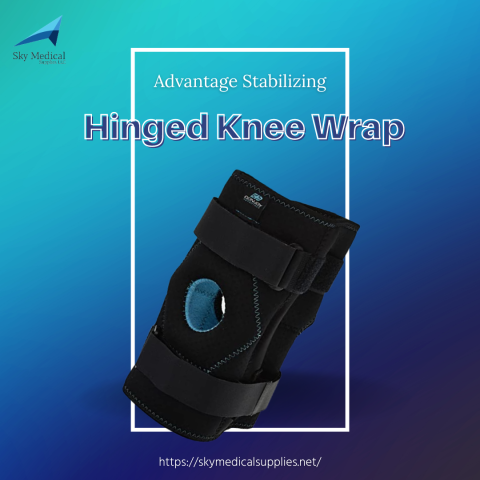
Tissue or ligament injury to any body part requires extra care and limited mobility to avoid more injury during recovery. But a patient can't limit the mobility of the injured leg, knee completely, or hip and unintentional movement can make the condition worse.
But assistive devices can help in limiting mobility, thus leading to better recovery. Knee braces and knee immobilizers are included in non-invasive equipment used during a recovery phase to minimize the movement of the affected area.
What Is the Difference Between Knee Immobilizers and Knee Braces?
Due to almost similar modes of action, knee brace and knee immobilizers are sometimes used interchangeably. As the name indicates, an immobilizer is used after the first few weeks of surgery. Doctors recommend it for injuries or surgeries in which even a little movement can be dangerous. The immobilizer can be removed and taken off during physical therapy sessions.
On the other hand, the metal hinge joint of the braces allows the knee to bend and straighten. The limited mobility keeps the joint stable and prevents extra strain or pressure on the healing ligament or tissue. Braces are also used as a preventive measure to avoid any injury especially worn by athletes.
Types of Knee Braces
Any fall or accident can damage the knee's structure, requiring a knee brace to heal. Any underlying condition or strong injury can cause dislocation. Different types of knee braces on the knee function and support level. That is why the knee braces should be selected according as suggested by the physician.
This device helps manage the pain and distributes the pressure around the knee. Based on the functions, there are four different types of braces. The doctor recommends the braces to see the condition of the patient. Knee braces are great for relieving pain and swelling for recovery after surgery.
Prophylactic Knee BracesIt is a preventive knee brace that is used mostly by sportspeople to prevent and reduce the severity of the ligamentous injury of the joint.
Mostly players of football or any other contact sportswear to protect the medial collateral ligament. Also, safeguard knee joints from being injured again. The most common knee braces are ACL brace and motion knee stabilizers.
- Functional Knee Braces
These are great for providing support for already injured knees. The patient uses it with an ACL injury or tear or the ones who need help after ACL surgery—also used by athletes with joint instability.
It has a hinge post shell design that improves soft tissue contact and offers long-term durability.
- Unloader/offloaded Knee Brace
Individuals suffering from medial compartment knee osteoarthritis and arthritis can take leverage from unloader knee braces. These braces distribute or offload the pressure from the affected joint to the thing bone. It makes the knee bend away from the affected part, thus reducing pain.
It is also used for preparative purposes by people in line for knee surgery. It helps in taking the stress off the knee beforehand.
- Rehabilitative Knee Brace
Taking care of the knee after surgery or an injury is imperative to prevent any further tear or pain. Rehabilitative knee braces work best for individuals with recent knee surgery or injury by limiting potentially harmful knee movements.
The braces protect injured ligaments while allowing little movement during early recovery. It also works great to watch the knee joint from future injuries.
Though these are not categorized as knee braces, they are commonly used for knee support. These provide compression around the knee joint, thus reducing pain and swelling.
When to Wear a Knee Brace?
Each knee brace has a different function and is worn in varying health conditions. So the user should consult the doctor to recommend a knee brace.
Some braces are worn all the time, while others are used only during any sport or physical activity. While wearing, it is crucial to check its placement, as a misplaced knee brace is harmful.
Benefits of Using Knee Brace
Wearing a knee brace brings several benefits. Following discussed are a few advantages of how it helps in different health conditions.
- Easy to Use
There is no need to consider a lot of factors when it comes to purchasing a knee brace. It comes for all genders and ages. Also, size can be adjusted by losing or tightening the knee brace straps. Moreover, these can manage the pain by handling the knee braces strips.
The braces are designed to be worn above or below the clothes.
- Improved Blood Flow
The compression provided by the knee brace causes an increase in blood flow to the knee. It leads to the provision of more nutrients and oxygen to the synovial membrane and synovial fluid. This provides extra lubrication to the knee joint.
Enhanced blood flow also helps in mitigating pain and swelling.
- Relief Pain
The knee joint knee is often associated with rheumatoid arthritis, osteoarthritis, swelling, and patellar tracking disorders. This makes the knee joint weak, brittle, and painful.
A knee brace acts by replacing the role of broken knee cartilage and enhances the overall effect.
- Provide Structural Support
Any pressure on the knee joint during recovery can lead to more injury. Knee braces help by shifting the pressure or weight of the knee to provide structural support.
The extra stabilization and support by the knee brace are provided by absorbing the body pressure on the joint.
How to Care for Knee Brace?
Tearing of the knee brace is normal during use. It is good to check the knee brace if it's worn out.
Keep the brace clean. It's easy as the fabric can be washed using soap and water. These devices have metals in design, so cover any exposed metal piece to prevent injury.
A worn-out knee brace needs to be fixed. The user should perform a daily check and replace the knee brace if required. Durable and high-quality braces might cost more but these will last long too.